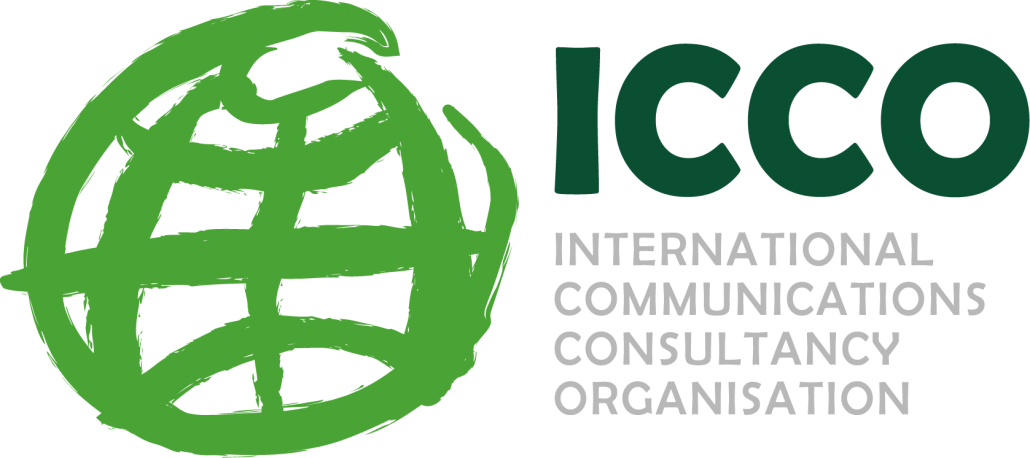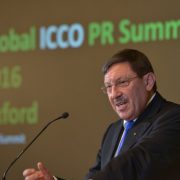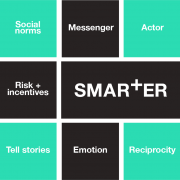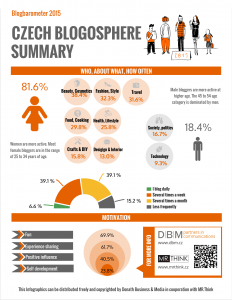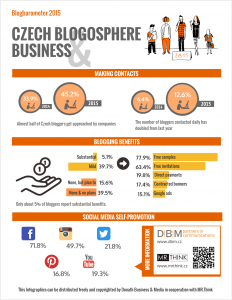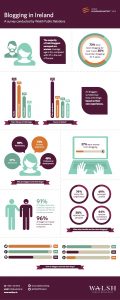By Elise Mitchell, CEO, Mitchell Communications & Dentsu Aegis Public Relations Network
This year’s conference theme was “Talent, Inspiration and Innovation – Creating the Consultancy of the Future.”
Two fast-paced days of speakers, panels and networking opportunities made it hard to pick, but here’s the best from my notes. As a bonus, I’ve included 23 links to research, case studies, frameworks and other resources.
Would love to know what you learned too, so please connect with me and share. Here’s to being inspired!
Elise Mitchell
CEO Mitchell and Dentsu Aegis Public Relations Network
Twitter
LinkedIn
Mitchell
EliseMitchell.com
A Fresh Look at Talent
1. Retaining talent is the top challenge agencies face today
2. Embrace diversity as if the future depends upon it
3. Technology can help agencies attract talent — use virtual reality when interviewing prospects to give them a tour of the office, give them an authentic feel for the company culture
4. Data can help agencies attract talent — we should use learnings from CRM tools to find and reach talent when they’re interested in making a job change
5. Be braver about who you hire
Global Women in PR Gender Pay Gap Study and panel discussion
6. The gender pay gap is £12,600 ($16,175)
7. 36% of agency board level (senior management) are men; 16% are women
8. Wage inflation is a challenge for agencies: pay is increasing, over-servicing tendencies by agencies and inability to raise fees means margin is squeezed
9. Flexibility needs to work both ways – between the agency and the employee, they must work together if flexible roles are to be developed successfully
10. The PR profession often doesn’t lend itself to flexible working roles or job sharing due to the unexpected needs of clients in a 24/7 world; harder to offer these types of situations to employees
11. Look at what people can do, not just what is on their resume
12. Challenge that lies ahead: Close the gender pay gap, retain talented women for a balanced boardroom, be more flexible in working practices, help women develop their skills to grow confidence
Diversity in Turkey
13. Communications is going back to being human, it’s the individual that counts
14. Family is an important aspect of life in Turkey; togetherness is something people value
15. Be hopeful – residents choose to celebrate life and look to the future in spite of the challenges the country is facing. A quote attributed to the Dalai Lama sums this up well: “What is the happiest moment of your life? Now.” The teaching: live in the present
Talent lessons from China
16. Give stretch assignments to your employees to keep them engaged, growing and bringing new value to clients
17. Don’t miss opportunities to bond with employees, capturing key moments of truth – review and reward employees when they don’t expect it (based on behavioral science, an unexpected positive event will send dopamine to the brain)
Winning the war for talent
18. Employees are effective brand ambassadors for their employers — content shared by employees has 8x greater engagement than content shared by the organization itself
19. PR agencies can compete for talent against management consultancies by offering a more creative environment; employees are attracted to work environments that place creativity at the core; work/life balance = fun
20. People leave bosses more than they leave agencies
Emerging markets
21. In India, 30% of revenue is coming from non-PR services
22. Hong Kong – PR pros need to develop talent in many areas and hire for hybrid roles, looking for combinations such as social media and entrepreneurship
23. Russia – the role of communications in organizations is changing significantly, the need for the CCO role is increasing
24. “Africa means business” – the PR industry is growing, but recognize that Africa is a very diverse continent that requires local market knowledge and strategy to engage with local stakeholders
Brand-building and brand culture
25. A brand is only as good as its people
26. Integrating your social feeds can enable you to build a more compelling personal brand, build your community
27. Millennials comprise more than 40% of those who use ad blockers
28. Criteria for winning at Cannes (Entertainment Jury): quality of content, relevant, entertaining, effectiveness
29. New York Times campaign “The Displaced” – Cannes Lion winner, example of experiential content like VR to immerse audiences in an engage manner ;it’s not just about understanding, it’s about feeling
30. ING campaign “The Next Rembrandt” – example of how data and deep learning can help a brand build meaningful relationship with audiences
31. Content marketing is most successful when it communicates a message and compels the viewer to share that same message; researchers have found the key to the content virality is to evoke an arousing emotion, whether positive or negative.
32. Crowdsourcing is an increasingly popular way to engage consumers, give them more power and choice; allows brands to gain valuable insights for innovation purposes
The power of the earned brand
33. Four behaviors that increase the most when “involved” consumers become “committed” consumers: participate in creating the brand’s content, like what the brand says on social media, willing to share personal data with the brand, early adopter of brand products/services when they come out
34. What consumers value about different media: earned media is most likely to get their attention; paid is most entertaining; peer media is most likely to change opinion or lead to purchase of a new brand; owned media is most accessible
Storytelling
35. Every story needs: a reason to be told, a hero, conflict, to touch our heart, to “go viral “ (living on from generation to generation)
36. Pick one person and tell their story, not an entire group of people
37. Creating empathy is key – the conflict and struggle are what draw us in
38. “Desire is the blood of good storytelling.”
Reputation and trust
39. Different reputations exist for different audiences within the same brand
40. Study by Mayer, Davis and Schoorman on three dimensions of trust: ability, benevolence, integrity
41. Reputation engagement is achieved through behavior, networks and narratives
42. Other people own your reputation; narrative is a powerful tool to influence reputation
How public affairs is changing
43. Position papers are no longer enough; we must tell stories on behalf of clients
44. An engaged CEO is the key to successful public affairs initiatives
45. Creativity plays an important role in public affairs
Being a learning leader
46. Learning leaders are open-minded, humble and believe “the world has something to teach me,” engage their teams in finding solutions, make the time to invest in themselves
47. Arrogance leads to ignorance; the world is changing and you must change with it
48. Benefits of learning: We stretch ourselves, gain broader perspectives, make better decisions, enable others around us to grow
49. Leaders today are becoming adaptive leaders – finding new solutions to new problems in real time
50. Learning tips for busy leaders: Listen to podcasts in the car or on the train, while you exercise; speed date suppliers to swap ideas and spot innovation you can apply to your agency
Next practices in public relations — Lord Chadlington
51. “The hamster is dead but the wheel is still turning” – i.e. you’re all dead unless…you can incorporate software, analytics and the ability to measure reputation online
52.We need to make more time to think: we are working too hard, too fast
53. Agencies of the future will invoice based on digital movement
54. Insights will carry the day, critical to be able to provide clients insights to drive campaigns
Communicating at the speed of culture
55. Consumers unlock their phones 150 times/day not to call anyone but to access and create content
56. “Moments in between doing other things” – when people are looking at their phones, flicking through infinite content
57. PR agencies are best positioned to manage clients’ needs in a noisy world; we are consistently good at two things: being reactive to what the world cares about right now; telling a good story
Lessons from the UK government communications
58. Four essential outcomes of comms work: changes in behaviors that benefit individuals and society, operational effectiveness of public services, reputation of the UK and responding in times of crisis, explanation of the government’s policies and programs
59. Why citizens would rather talk about football? Timeless themes: struggle, persistence, challenge, success
60. Download evaluation performance tools and framework
61. Good leaders ask themselves: What do you want to be remembered for? And then strive to live up to that
62. Good leaders have the courage to step up/step in when they are needed, voice ideas that help drive needed change, inspire others to learn
Cannes panel
63. The emotional connection is essential for entries to demonstrate
64. Campaign illustrating impact of data on creativity: “The House of Clicks”
The science of human behavior
65. Study on what impacts our decision-making in completely unrelated situations: what judges ate for breakfast, whether a college football team (American football) won/lost
66. We make 226 decisions a day about food (most are unconscious); example of “system one” decision-making (automatic, effortless, associative); we use system one more than we think we do!
67. Publications of Daniel Kahneman, Nobel prize winner on “thinking fast and slow”
68. Clients are very interested in behavioral insights because they are evidence-based
69. We spend too much time on the “Sherlock Holmes” bias – trying to persuade people with pros/cons; emotions play a much larger role than we think
70. Social persuasion can be a very effective approach –“everybody’s doing it” – example: communicating that 9 out of 10 people file their tax returns on time to encourage timely filing
71. Download insights framework: Four simple ways to apply behavioral insights
72. Give and take: How reciprocity drives our behavior
73. A/B testing of campaign messages on your website is a valuable way to determine what motivates people to respond more often; apply learnings to gain traction; however PR industry should test behavioural triggers more often rather than just wordsmithing
“Spikey” ideas rather than just a big idea
74. An idea that enables many activations, manifests itself across many channels
75. Good insights are at the core of spikey ideas; the combination of human insights, social insights, brand/product insights
76. Spikey ideas have at the core a persuasive human truth or purpose
77. PR agencies are better equipped to develop/deliver spikey ideas because we think and can activate across all channels (PESO)
78. Semantic encoding –it’s not just what you see or hear but the meaning of something helps you remember it
79. Case study: “Kern the Gnome” engaged scientists around the world to teach us about gravity
80. Case study: #emergencylessons to bring school to children in war-torn countries
Time-keeping and timesheets
81. You don’t prove value to clients by showing time sheets. Demonstrate that you have achieved pre-defined objectives and targets.
82. Some clients do require time sheets and audit them, but employees struggle to keep them accurate and current
83. Daily time entry helps fight “time slippage,” a big challenge for agencies
84. The downside of time-keeping: Time sheets are “an assault on creative brains at work”
85. Don’t threaten employees who are not keeping accurate time sheets, instead reward employees who are (occasional free venti or beer when time sheets are up to date)
86. Time-keeping is a valuable tool to measure time spent against certain activities and the opportunity cost of not being able to do other things
Analytics functions that work at agencies
87. It’s not just about the numbers, it’s also about the packaging; think about how to make data beautiful and shareable
88. The role of metrics in award-winning entries: We have a responsibility to force award-winning entries to demonstrate robust metrics; otherwise we send the wrong message to the industry that it’s okay not to measure. Could this encourage clients and agencies to invest more in metrics?
89. Challenge for agencies: Until more of agencies’ work is paid based on results, they’re not going to invest as much in measurement
90.Outputs alone are losing their effectiveness; must include outtakes (response and reactions of audiences) and outcomes to show business impact
91. Download integrated evaluation framework from AMEC
Innovation and creativity
92. “Some skeptics insist that innovation is expensive. In the long run, innovation is cheap. Mediocrity is expensive.” (Tom Kelley, General Manager IDEO).– IDEO founder
93. Invitation to join the Innovation in Communications panel
94. Where a client starts isn’t always where they end up; design thinking helps uncover what is really most important to clients and what their objective is
95. Snapchat: Users are documenting their lives on this platform; brands in the Middle East have been using Snapchat as a valuable customer service channel for the past 2-3 years
96. National Geographic campaign Face Swap to create and demonstrate empathy with others
97. AR/VR can help create empathy in audiences – “augmented empathy”
98. Use of robotics in business: Pepper the Robot uses ability to understand emotions to manage customer service interactions
99. Reuters Institute for Study of Journalism: Many valuable reports on innovations in the profession
100. Creativity should be as important to study in schools as STEM
101. World Economic Forum 21st century Skills Gap goes in-depth on key skills needed in the future — critical thinking, problem-solving, persistence, collaboration and curiosity; flexibility is a critical skill due to the amount and speed of change
102. Being perceived as an innovative workplace can help agencies attract talent; employees care significantly about what they get to work on and who they work with
103. Adobe Kickbox is a toolkit to jumpstart innovation in your company
Other resources
• “Innovate or Die” – another great summary of ICCO summit takeaways by Sonya Madeira
• C-Suite podcasts — interviews with many ICCO summit presenters
• Official speaker presentations and photos from the summit can be downloaded from ICCO here
The 2017 Global ICCO PR Summit will take place in Helsinki, Finland. To find out more, contact ICCO General Manager Charlene Corrin, charlene.corrin@iccopr.com.
